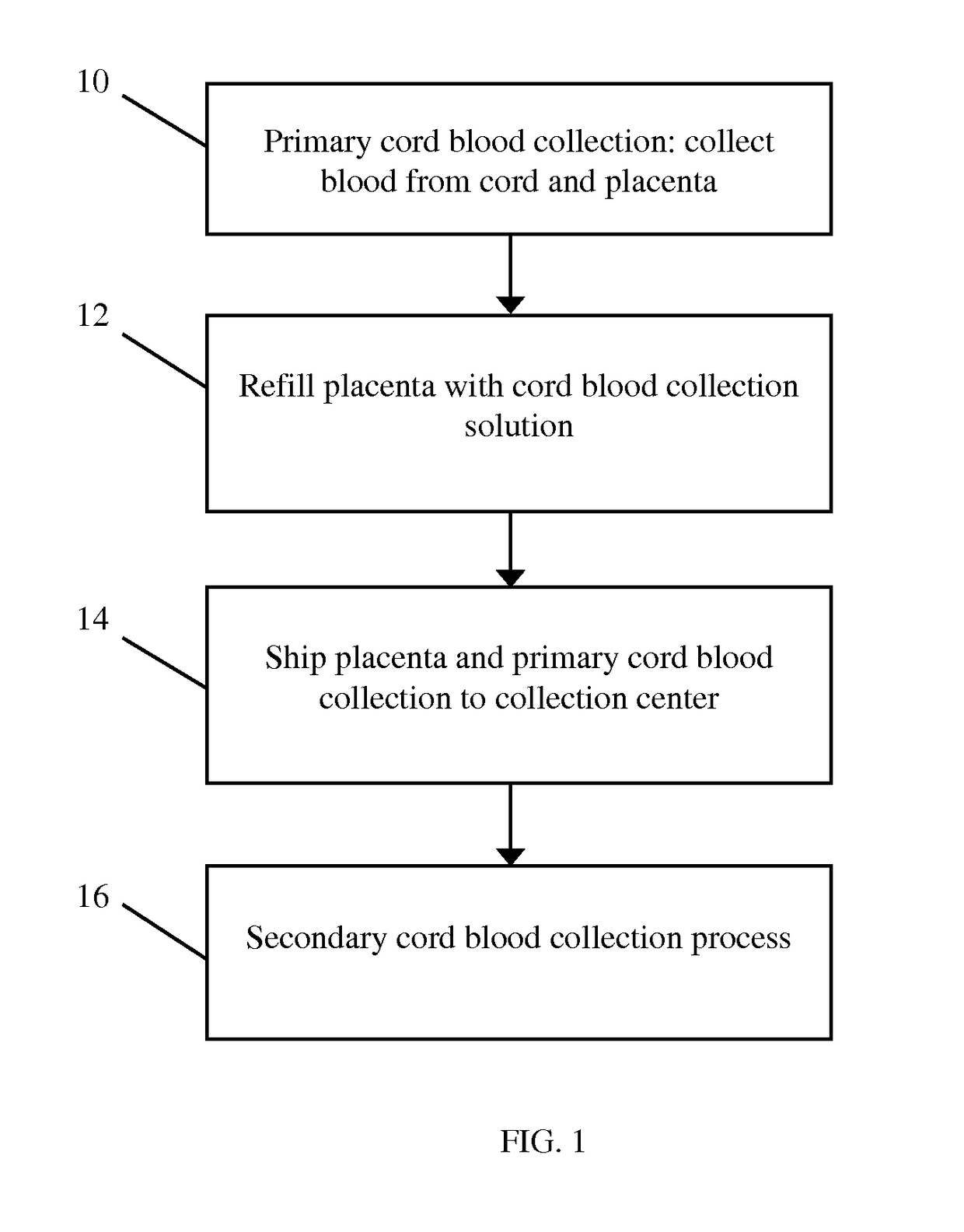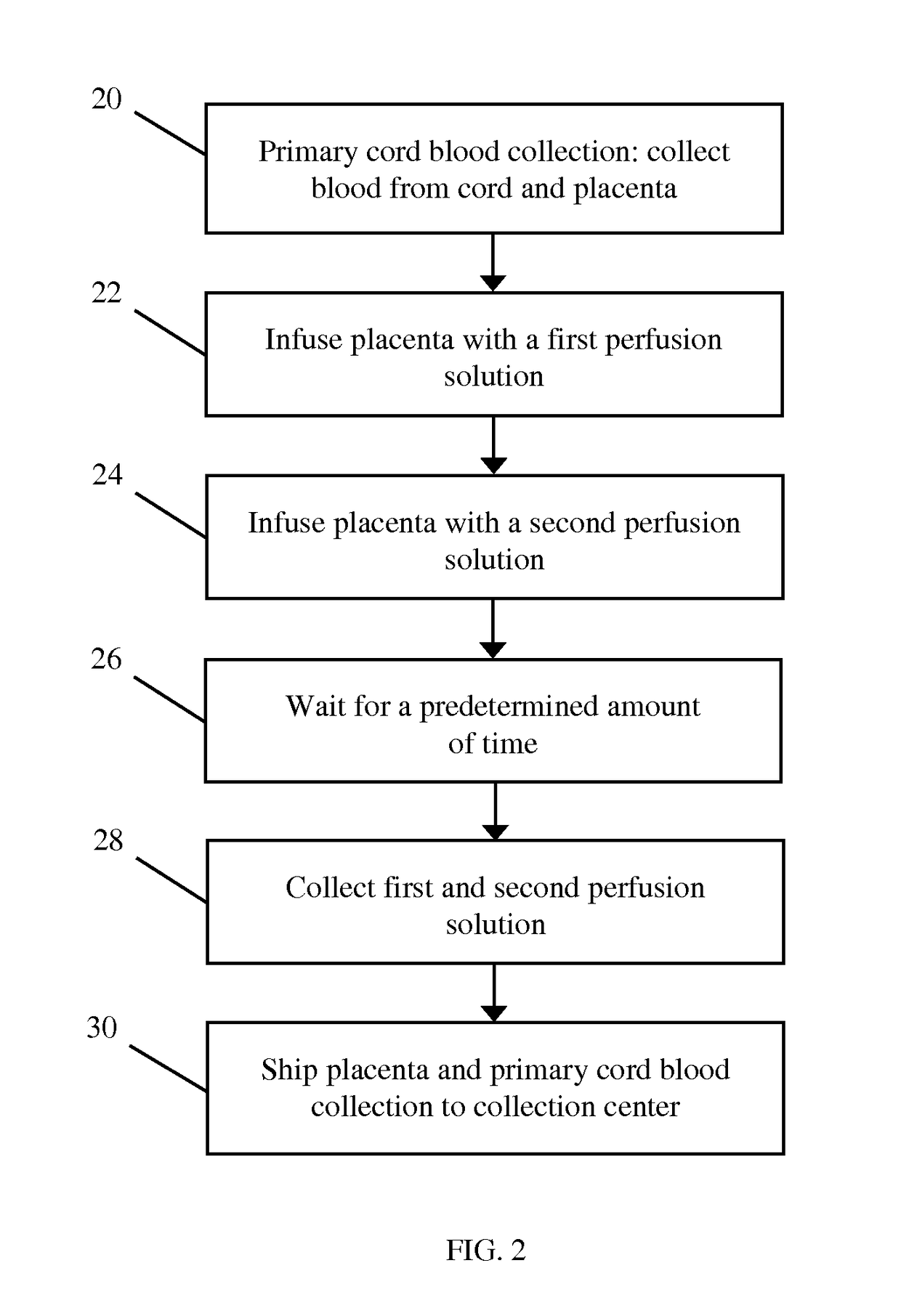Procurement of placental stem cells
a placental stem cell and placental technology, applied in the field of placental stem cells, can solve the problems of insufficient stem cells for adult patients, often unsuitable adult patients, etc., and achieve the effect of increasing the number of stem cells collected
- Summary
- Abstract
- Description
- Claims
- Application Information
AI Technical Summary
Benefits of technology
Problems solved by technology
Method used
Image
Examples
Embodiment Construction
[0042]Referring now to the drawings, wherein like reference numerals refer to like parts throughout, there is seen in FIG. 1 a flowchart of a method of stem cell collection according to one embodiment of the present invention. At step 10 is the primary cord blood collection procedure. This is accomplished using any of a variety of known cord blood collection methods, or any method capable of collecting the excess cord blood from the umbilical cord and / or placenta shortly after childbirth. For example, the cord blood can be collected using the following procedure: (i) deliver the baby vaginally or via cesarean section; (ii) clamp the umbilical cord at both the mother's and the child's side and cut the cord at a location between the clamps; (iii) insert a tube or needle into the umbilical vein to collect the blood via gravity; and (iv) ship the blood off for processing and dispose of the placenta. In a preferred embodiment, the cord blood is collected after delivery of the baby but be...
PUM
| Property | Measurement | Unit |
|---|---|---|
| concentration | aaaaa | aaaaa |
| concentration | aaaaa | aaaaa |
| concentration | aaaaa | aaaaa |
Abstract
Description
Claims
Application Information
 Login to View More
Login to View More - R&D
- Intellectual Property
- Life Sciences
- Materials
- Tech Scout
- Unparalleled Data Quality
- Higher Quality Content
- 60% Fewer Hallucinations
Browse by: Latest US Patents, China's latest patents, Technical Efficacy Thesaurus, Application Domain, Technology Topic, Popular Technical Reports.
© 2025 PatSnap. All rights reserved.Legal|Privacy policy|Modern Slavery Act Transparency Statement|Sitemap|About US| Contact US: help@patsnap.com


